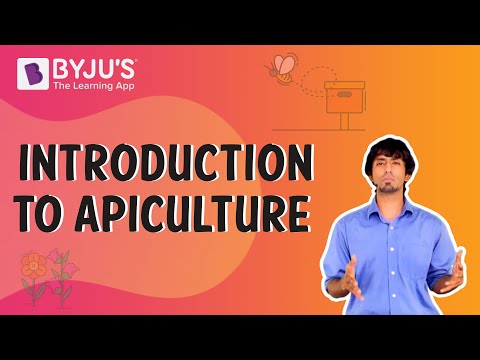According to the CBSE Syllabus 2023-24, this chapter has been removed from NCERT Class 12 Biology textbook.
One of the major concerns in recent times has been the issue of population explosion, which in turn has necessitated the enhancement of food production. For this reason, different biological techniques and principles are being developed.
These techniques are applied to animal husbandry and plant breeding, which has a major role in our efforts to increase food production. Some new techniques such as embryo transfer and tissue culture techniques are ought to play a vital role in enhancing food production furthermore. Explore more through strategies of enhancement in food production notes provided here.
Topics Covered in Chapter 9 Strategies for Enhancement in Food Production
Animal Husbandry
Plant Breeding
Single Cell Proteins
Tissue Culture
Animal Husbandry
It is the agricultural practice of breeding and raising livestock. It deals with the care and breeding of livestock such as cows, horses, cattle, sheep, camel, etc., that are useful to humans as they provide milk, eggs, honey, silk, meat, fibre etc. It also includes fisheries and poultry farming. The management of farms and farm animals involves the following procedures:
- Dairy farm management – it is the management of animals for milk and its products.
- Poultry farm management – Poultry is the class of domesticated birds used for food or for their eggs which typically includes ducks and chicken.
- Animal breeding – Breeding between animals of the same breed is referred to as inbreeding, whereas crossing between different breeds is known as outbreeding. The process of inbreeding causes a rise in homozygosity; hence it is essential to evolve a pure line in any animal. Some other aspects of animal breeding are – outbreeding, out-crossing, cross-breeding, and interspecific hybridization. In order to improve the herd, some programmes are also adapted, such as – Multiple Ovulation Embryo Transfer Technology(MOET).
- Bee-keeping or apiculture – it is the maintenance of hives of honeybees for the production of honey.
- Fisheries – it deals with catching, processing or selling fish, shellfish or other aquatic animals.
See More: Important Questions for Class 12 Chapter 9: Strategies for Enhancement in Food Production
For more information on Apiculture, watch the below video

Plant Breeding
It is a technology that has helped increase yields to a large extent. Green Revolution was dependent to a large extent on plant breeding techniques for the development of high-yielding and disease-resistant varieties in rice, wheat, maize etc. Plant breeding is the purposeful manipulation of plant species in order to create desired plant types that are better suited for cultivation, give better yields and are disease resistant.
Listed below are the steps in breeding a new genetic variety of a crop.
- Collection of variability
- Evaluation and selection of parents
- Cross-hybridization among the selected parents
- Selection and testing of superior recombinants
- Testing, release and commercialization of new cultivators
The most common methods of plant breeding are listed below.
- Hybridization
- Tissue culture
- Biofortification
- Mutation breeding
- Somatic hybridization
- Plant breeding for improved food quality and developing resistance to insects and pests
Plant Breeding for Diseases Resistance
The resistance of the host plant is the capability to prevent the pathogens from causing any disease. This is determined by the genetic composition of the host. Plant breeding and development in cases of crop losses help enhance the production of food. It can also help to reduce the dependence on the use of bacteriocides and fungicides. Tobacco mosaic and turnip mosaic by viruses are examples.
Some of the methods of breeding for disease resistance conventionally are selection and hybridization, whereas different sequential steps are – screening germplasm (resistance sources), hybridization (selected parents), evaluation and selection of hybrids, and the release of new varieties after testing.
Single-Cell Protein
Single-cell protein(SCP) is one of the alternate sources of proteins for animal and human nutrition. Microbes are cultivated on an industrial scale as a source of good protein. Spirulina (blue-green algae) can be grown on materials like wastewater from potato processing plants, molasses, straw, and sewage to produce large quantities and can serve as food rich in protein, fats, minerals etc. This also helps to reduce environmental pollution.
Tissue Culture
In tissue culture, any plant part can be taken out and cultivated in a test tube in sterile conditions in a special nutrient media(providing a carbon source such as sucrose and also inorganic salts, vitamins, amino acids and growth regulators). This process of generating a whole plant from any cell/plant is called totipotency. The method of producing thousands of plants through tissue culture is called micropropagation, and these plants are genetically identical to the original plant from which they are grown.
Stay tuned with BYJU’S for more on Strategies for enhancement in food production notes.
Further Reading:
Frequently Asked Questions on CBSE Class 12 Biology Notes Chapter 9 Strategies for Enhancement in Food Production
What are single-cell proteins?
The proteins which are derived from the cells of microorganisms such as yeast, fungi, algae and bacteria are known as single-cell proteins.
What is apiculture?
Beekeeping or maintaining bee colonies is known as apiculture. It is also called the act of rearing honeybees.
What is biofortification?
The process of increasing the micronutrient content of a food crop through selective breeding, genetic modification or the use of enriched fertilizers is called biofortification.
Comments